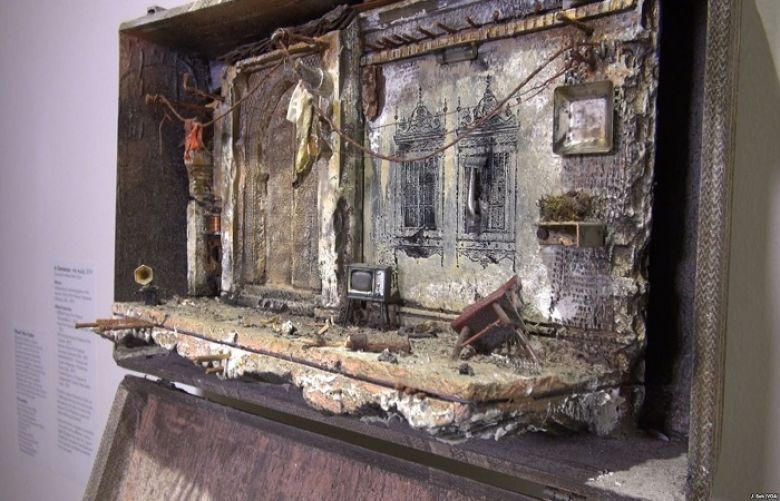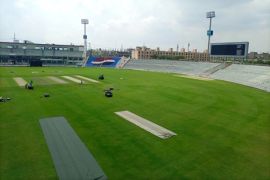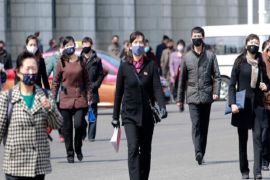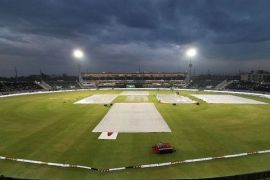Looking into this three-dimensional miniature streetscape by artist Mohamed Hafez is a little like spying.
The building is completely exposed to the elements. The staircases are dangling. But clothes hanging on the line attest that people once lived here.
"I think the human eye is fascinated by the detail of destruction," he explains. "There is something that lures us into that complexity of something falling apart. We are always curious to find out what happened."
This streetscape, like most of Hafez's work depicts the damage caused by the seven-year civil war in his native Syria.
"There's nothing glamorous about destruction," Hafez says, "but I use it as a therapeutic way for me to heal and creatively weep over the destruction."
Hafez is an architect who designs towering skyscrapers, a fact that adds to the intrigue of his miniature artworks.
"Collateral Damage," an ongoing exhibition of his work at the Fairfield University Museum in Fairfield, Connecticut has artwork representing Syria before the war, Syria during the war, the experience of refugees and his most recent project, examining the Syrian identity in the diaspora.
Refugee baggage
Hafez has won recognition in the past few years for his miniatures that illustrate the refugee experience. One reason for that is that the tiny scenes showing the houses and places that refugees were forced to abandon are built inside suitcases and not just any suitcase, but ones carried by real refugees as they fled.
"A lot of people came to me with their parents' and grandparents' suitcases. I'm talking about Jewish communities, Irish communities, German communities, Indian communities that really felt and resonated with the push back against today's immigrants and reminded them of what their ancestors and their grandparents have been through in this country."
Some of the suitcases go back to the 1800's and, as the "belongings of yesterday's immigrants" they play a role in telling "the story of today's immigrants to remind us collectively that history could repeat itself," Hafez says.
As an immigrant, himself, Hafez brings a special understanding to the refugee experience. Born in Damascus, Syria, he grew up in Saudi Arabia and came to the U.S.15 years ago as an architecture student. He came on a single-entry only visa, which meant he could not go home for the first eight years.
"This has caused a lot of homesickness and longing to the beautiful country that I have left. I started using scrap materials and leftover materials from architectural model making. And I started remodeling old Damascus and old Aleppo in miniature form."
All the while "contributing to the American skylines," Hafez - a Syrian and a Muslim - is "proudly a member of (American) society and I call America my home."
And like any proud American, Hafez is fighting for his America. "I am not building art to cater to my echo chambers but I'd like to cater to somebody that might have, what I call, spicy opinions against refugees, Muslim Americans, and immigrants."
Restoring humanity
"…the vases…the little flower pots … the hanging laundry … the lights. And all the little chairs," Melissa Demartin lists components of Hafez's work that have resonated with her.
"The artist really captures that even in chaos and as bad as things can be, you can find some beauty," she says.
Studying Hafez' work at the Fairfield University Museum, Demartin came away with her own perspective.
So did Krissy Ponden.
"When we see pictures of destruction on the news, we're really seeing just the aftermath," she observed. "When the artist talked about how the faces of the buildings get sheared off by bombs and give a little glimpse of what their life was like. … When we see this destruction, this is actually the interruption of people's lives."
And Tre Kayumba, originally from the Congo by way of an orphanage in South Africa:
The artwork "speaks to the human condition," he says, and how disagreements "can result in total destruction."







